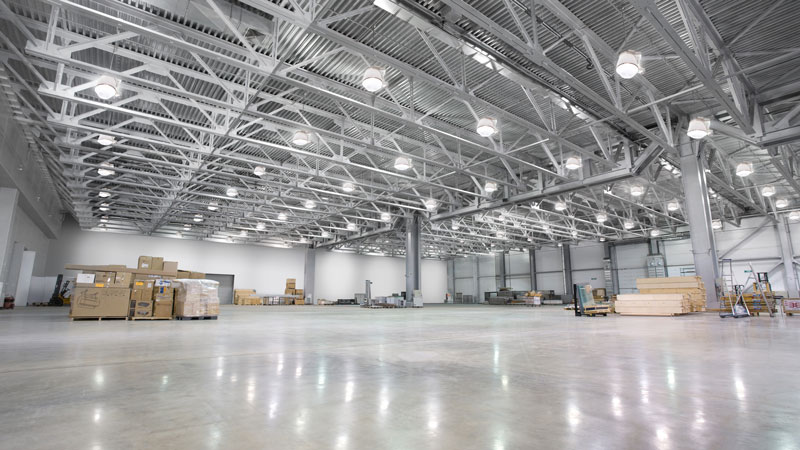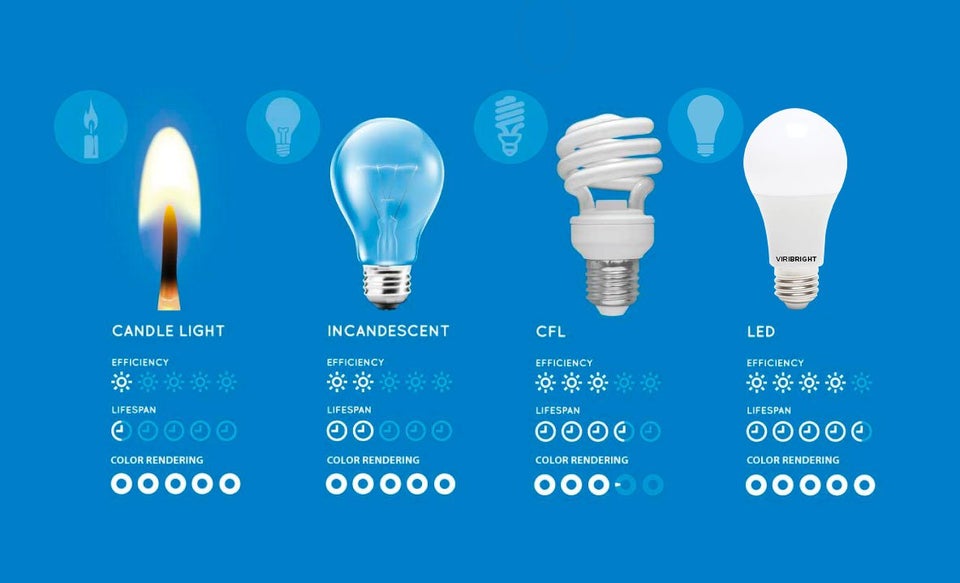Lighting accounts for the largest portion of energy use in non refrigerated warehouses, and it is needless to say that lighting is critical to a warehouse performance and safety. Every warehouse is different, and lighting is totally dependent on your specific warehouse’s needs and requirements. There are multiple solutions for your lighting needs and choosing between them can be challenging for non-experts. We are here to help you make the right decisions.
To find out more about Warehouse Lighting, please visit our Warehouse Lighting for Sale pages, where you can also request a quote.
Different Types of Light Sources
Generally, high intensity discharge (HID), fluorescent, and LED are three options of light source you can use for your warehouse. Each one has its own pros and cons. HID lamps were long considered as the best choice for lighting warehouses and are still often used. HID has the lowest initial cost, they have the highest rate of Lumen depreciation, and they do not have many color temperature options. High pressure sodium lamps have a color temperature of about 2200K to 2400K which is very yellow in appearance. While metal halide lamps are around 4000K to 4500K, which is much whiter in color. All HID systems also need a warm up time before reaching full illumination and require a cool down period after being turned off before they can be turned on again. This means power surges can cause the lights to be off for up to fifteen minutes.
Fluorescent lighting is a great budget-friendly alternative to HID lamps. They offer more color temperatures, ranging from 2700K to 6500k with sizes and shapes that allow you even greater flexibility when it comes time for your space’s illumination needs! However, these lights have two major disadvantages. First, they cannot operate properly at extreme cold or hot temps because of their sensitivity to operating temperature, and second, they have a short lifespan, especially when they turn on and off frequently. Therefore, if your warehouse is in extreme temperatures or you have areas with high frequency of turning on and off the lights, you have to avoid fluorescent lights.
LED Warehouse Lighting Fundamentals
LED light is another type of light you can use for your warehouse. With less power consumption and an equal or better lumen output than other sources, these lights will be a huge asset in any building. They come in multiple fixture options, so you can plug-and-play them to your current system, or you can design your system from scratch with LED lighting. They also have a huge life span of 100,000 hours. LED lights are often sensitive to high temperatures, so you have to design your lightings carefully if you are located in areas with extreme heat.
Light colors
The color of your lighting is measured by its temperature. Studies showed that light color has a huge impact on visibility, productivity, and eye strain. Color temperatures between 4000K and 5000K are the best choice for warehouses. This range emits a cool white, sometimes seen as having a bluish tint, which has been proven to help reduce eyestrain and create a productive work environment.
Light pattern
There are generally two types of warehouse light patterns, I or V pattern. Space with tall shelving units will need a type I distribution which is a very long and narrow light pattern. This ensures none of the light is lost or blocked by the top of the shelves. If your warehouse has a more open floor plan, a type V light distribution is more appropriate. This light pattern emits light in a wide spread from all sides of the fixture in a circular or square distribution. To avoid unwanted illumination problems, make sure your light fixtures are correctly spaced so they don’t cause hot spots or glare. If you’re not sure what distance is right for each fixture in the room then consult an expert before purchasing new ones!
Smart lighting
When lighting large spaces like warehouses, smart lighting is the best way to optimize your lighting and energy usage. Using smart lighting can reduce your lighting energy usage by 30 percent. Smart lighting can turn lights on and off based on if anybody is using or intend to use the space.
As you can see, designing the perfect lighting system is an important and complicated task that can increase your productivity remarkably. Designing the perfect system needs its own expertise, because every system is unique and every aspect of the system has to be perfectly matched in order to have a smooth operation inside the warehouse. Our experts in Linquip are ready to help you to achieve your goals in all aspects of design, procurement and installation of your warehouse equipment. Our unique network of suppliers, manufacturers, and service providers are here to help you with the best equipment at the fastest time. Feel free to contact us for your warehouse needs, or ask for a quote of any equipment in our directory.
Buy Equipment or Ask for a Service
By using Linquip RFQ Service, you can expect to receive quotations from various suppliers across multiple industries and regions.
Click Here to Request a Quotation From Suppliers and Service Providers
Read More on Linquip
- Beginner’s Guide: The Difference Between Gas Turbine and Gas Engine
- Power Solutions for the Crypto Mining Industry
- Best LED Lighting for Warehouse & Gurage
- Warehouse Equipment Products
- Best Led Fixtures for Warehouse and Garage
- Warehouse Lighting Manufacturers and Suppliers
- The Best Racking Warehouse Systems
- Warehouse Racking Manufacturers & Suppliers: Clear Guide
- Best Warehouse Lighting: 7-Top Ranked Models
- Warehouse Management In Manufacturing: A Clear Guide
- 11 Essential Warehousing Services Offered by Warehousing Companies
- Top Warehouse Suppliers: The Best All over the World
- Best Warehouse Pallet Shelving: A Clear Guide
- Top Manufacturing Warehouses: A Clear Guide
- Prologis Essential Company Page on Linquip
- List of All Prologis Essential Service
- Prologis Essentials General Services
- Prologis Essentials Installation
- Prologis Essentials HVAC Maintenance
- Structural Pallet Racking for Sale by Prologis Essentials
- Warehouse Lighting Products by Prologis Essentials
- High bay LED lighting Products by Prologis Essentials
- Warehouse Solar Products by Prologis Essentials
- Warehouse Lighting for Sale by Prologis Essentials
- High bay LED lighting for Sale by Prologis Essentials
- Industrial Generator for Sale by Prologis Essentials




